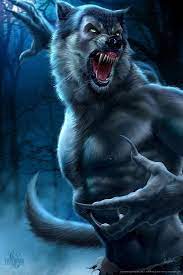
Margo here, working to keep the (A) in STE(A)M. Science purists might think the (A) is unimportant but I’m here to argue that it is Very Important. and I will present reasons why.
For instance, this month’s theme is “rivers.” This week, I have examples of books about rivers that are superior at delivering content to youngsters because of that (A). I selected these books because they are perfect examples of using (A) – creativity in BOOK DESIGN that makes the content easier to understand and enjoy. Remember the spoonful of sugar? Plus having students make their own books is the perfect way to evaluate their learning and understanding of the subject matter (more on that below).
The first book is World Without Fish by Mark Kurlansky, illustrated by Frank Stockton. Take a look at this page. The book designer has made the page speak by using color, type design, and compositional tricks. Let’s back up a bit.
In the study of art, you will find that “art” has three components: subject, form, and content. Subject is, well – what it’s about. Subject in a painting might be an apple, in a book – rivers. Content is deeper meaning – the deeper meaning of the apple might be hunger depending how the apple is portrayed. In the book, content could be environmental impact. And form refers to the physical aspects, such as medium (paint or pencil) or such observable concepts as composition and color. Book design comes under the component of form. I argue that appropriate and creative FORM enhances the subject and content. And that (A) art is an essential ingredient in STE(A)M.
 In World Without Fish, the subject is of course fish. The content is what is happening to fish, the impact of fishing, and possible solutions to maintaining the oceans environmentally and economically. Now this might be exciting to read just the text, but to some students, it might not. So the publishing team has taken creativity to the form – the book and type design, the colors, the styles and size – to make a book where the content fairly jumps off the page and engages young readers with energy. It includes a comic series that appears at regular intervals throughout the book. So we have the art of “visual narrative” to further the content and engage all types of learners.
In World Without Fish, the subject is of course fish. The content is what is happening to fish, the impact of fishing, and possible solutions to maintaining the oceans environmentally and economically. Now this might be exciting to read just the text, but to some students, it might not. So the publishing team has taken creativity to the form – the book and type design, the colors, the styles and size – to make a book where the content fairly jumps off the page and engages young readers with energy. It includes a comic series that appears at regular intervals throughout the book. So we have the art of “visual narrative” to further the content and engage all types of learners.
The illustrations and creative use of type all serve to draw the reader in.

The next book, Explore Rivers and Ponds, by Carla Mooney, illustrated by Bryan Stone, is an activity book with more examples of creative arrangement of content. The design makes the material easier to understand. It’s almost conversational. It pauses to explain vocabulary and includes activities such as ‘bark rubbing,” which looked like a great active art project for getting kids out into nature and interacting directly with the environment. It’s an activity that requires no “art” experience and can produce some great drawings.
One of my favorite activities with students is making books. It offers a creative and very satisfying way for students to “show off” what they have learned. Let the students try their hand at creative book design. A very friendly and ecologically conscious guide to making books with kids is Susan Kapuscinski Gaylord’s Handmade Books for A Healthy Planet. An enthusiastic environmental artist, she offers many ideas for book projects. Visit her website for many free activities or visit her YouTube channel. https://www.youtube.com/user/skgaylord.

A project I did with university students requires publishing software skills, but it’s a great project that combines research, writing, collaboration, proper citing of sources, and, of course, art, and can be scaled down for younger children. I partnered with Dr, Esther Pearson, a member of the Echota Cherokee Tribe and we produced a coloring book called “Native American Lore.” The students did the research and artwork and had the satisfaction of seeing their work in print. We presented it at an educational symposium and proceeds are donated to a non-profit that provides school expenses for the children of migrant workers in Veracruz, Mexico. The students had an amazing sense of accomplishment to see their research and artwork out in the world. This would be great for science topics and promote teamwork and cooperation. You can still find our book on Amazon. 
Please don’t think because you are not an artist, you can’t work (A) into STEM projects. You will find your students have a good sense of art and many will be delighted to help plan. There are plenty of resources such as Susan Kapuscinski Gaylord’s book, and you may find you have more (A) in you than you realize.
Books can be found here:
World Without Fish by Mark Kurlansky, Frank Stockton (Illustrator) ISBN-13: 9780761185000, Publisher: Workman Publishing Company. https://bookshop.org/books?keywords=9780761185000
Explore Rivers and Ponds! Carla Mooney (Author) Bryan Stone (Illustrator) 9781936749805. Nomad Press (VT) https://bookshop.org/books/explore-rivers-and-ponds/9781936749805
Handmade Books for a Healthy Planet – Sixteen Earth-Friendly Projects From Around The World, Susan Kapuscinski Gaylord, ISBN-10: 0984231900, makingbooks.com. https://www.susangaylord.com/store/p7/Handmade_Books_For_A_Healthy_Planet.html
Native American Lore An Educational Coloring Book: Class Research Project Paperback – November 5, 2018 by Dr. Esther Pearson (Author), Margo Lemieux (Author), Riverside Studios Publishing, ISBN-10 : 1731183933 . https://www.amazon.com/Native-American-Lore-Educational-Coloring/dp/1731183933/ref=sr_1_1?crid=2N6YKOA8ZYDBD&keywords=Native+American+lore+lemieux&qid=1662756358&sprefix=native+american+lore+lemieux%2Caps%2C94&sr=8-1
*********
Margo Lemieux is professor emerita at Lasell University, former regional advisor for SCBWI New  England, and a lifelong learner. Her publishing credits include picture books, poetry, articles, and illustration. Her latest publishing project is an anthology with her writers’ group, the Magic Storymakers, titled Kaleidoscope for Kids.
England, and a lifelong learner. Her publishing credits include picture books, poetry, articles, and illustration. Her latest publishing project is an anthology with her writers’ group, the Magic Storymakers, titled Kaleidoscope for Kids.

 In today’s Author Spotlight, Natalie C. Parker, author of the acclaimed young adult Seafire trilogy among other YA titles, chats with me about her MG debut, The Devouring Wolf. Hailed by Kirkus as “An easily devoured, chilling, and suspenseful adventure,” the fantasy novel is out now from Razorbill. Plus, scroll down for a chance to win one of THREE copies! 👇
In today’s Author Spotlight, Natalie C. Parker, author of the acclaimed young adult Seafire trilogy among other YA titles, chats with me about her MG debut, The Devouring Wolf. Hailed by Kirkus as “An easily devoured, chilling, and suspenseful adventure,” the fantasy novel is out now from Razorbill. Plus, scroll down for a chance to win one of THREE copies! 👇















 Carla Mooney loves to explore the world around us and discover the details about how it works. An award-winning author of numerous nonfiction science books for kids and teens, she hopes to spark a healthy curiosity and love of science in today’s young people. She lives in Pennsylvania with her husband, three kids, and dog. When not writing, she can often be spotted at a hockey rink for one of her kids’ games. Find her at
Carla Mooney loves to explore the world around us and discover the details about how it works. An award-winning author of numerous nonfiction science books for kids and teens, she hopes to spark a healthy curiosity and love of science in today’s young people. She lives in Pennsylvania with her husband, three kids, and dog. When not writing, she can often be spotted at a hockey rink for one of her kids’ games. Find her at